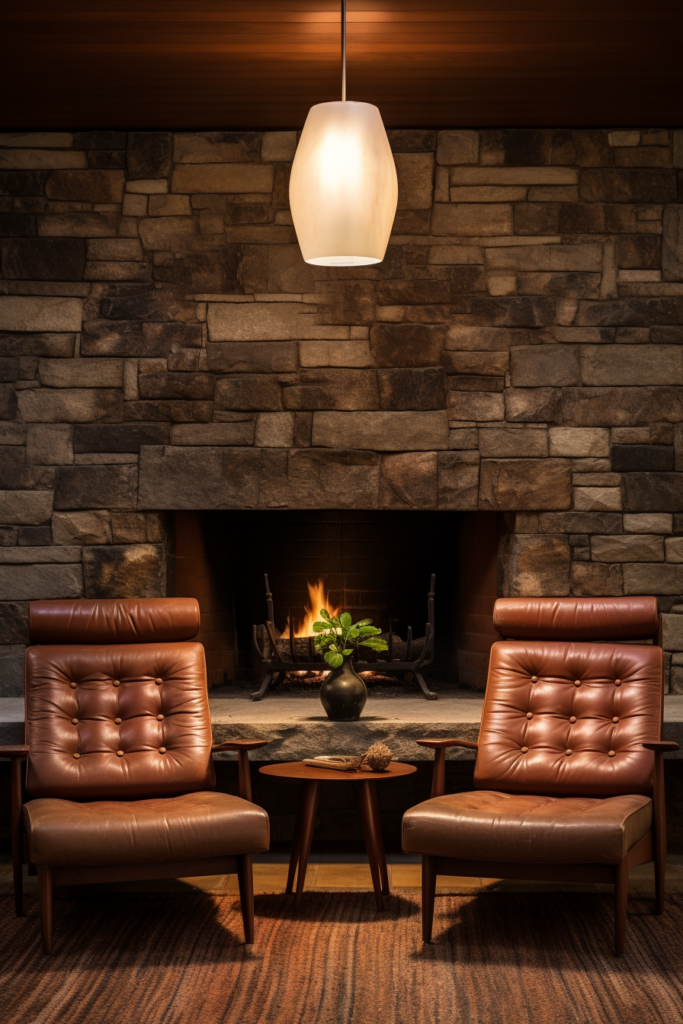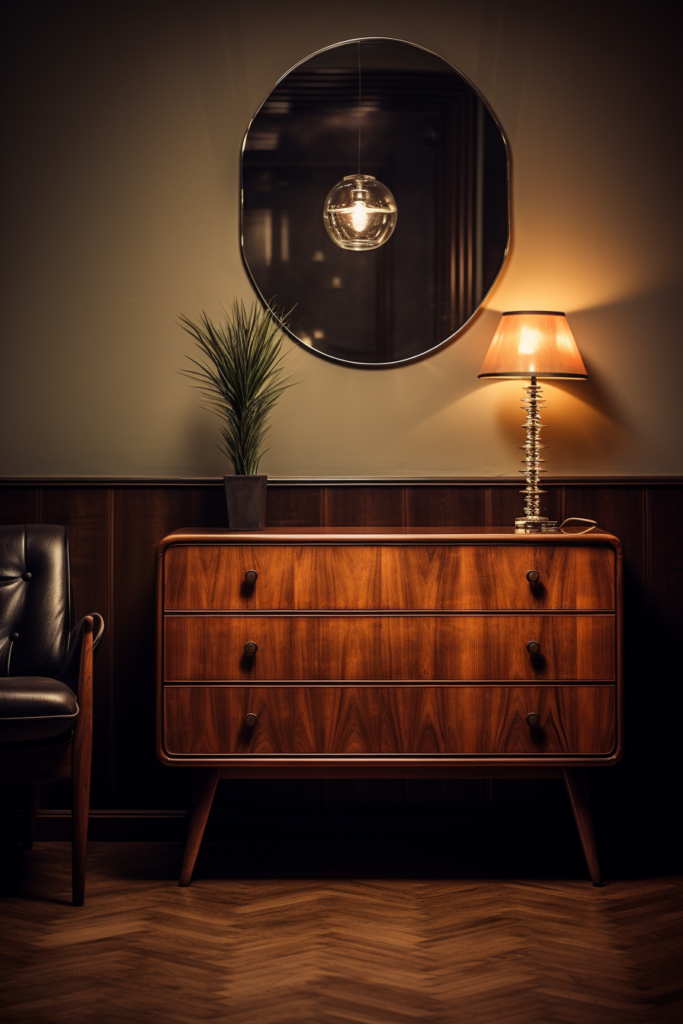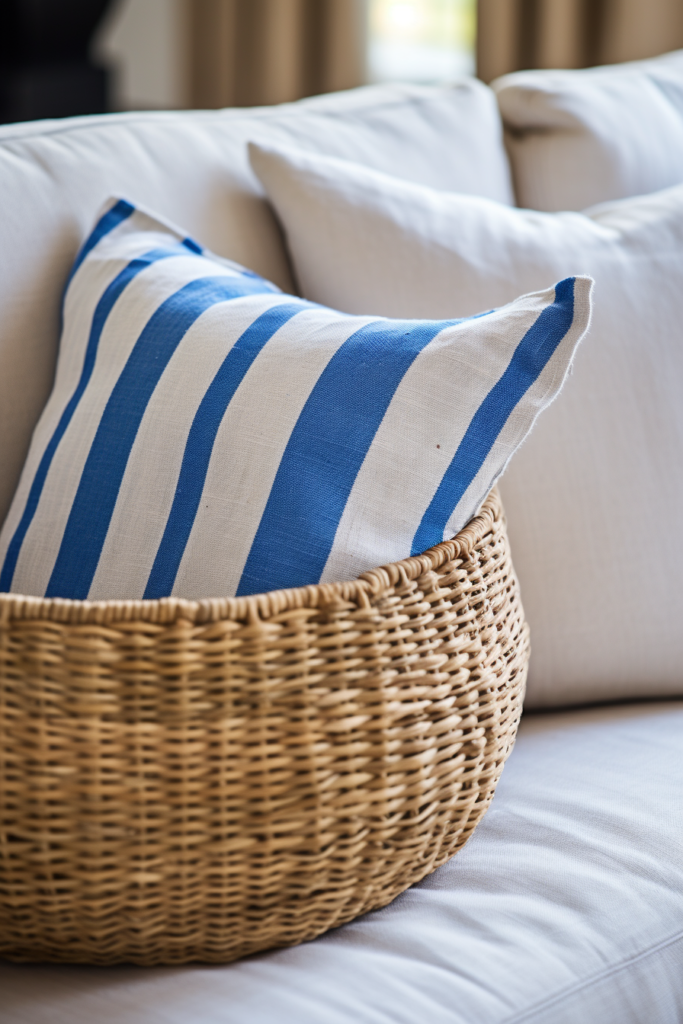Creating a harmonious flow between the living room and dining area is key to enhancing the overall visual appeal of your home. Careful coordination of the color scheme, decor elements, and styling can establish continuity between these spaces.

Here is a step-by-step guide to help you effortlessly blend these areas into a cohesive whole.
Understand the Purpose of Each Area
The living room is meant for relaxation and entertainment, while the dining area facilitates conversation over meals. Identify the purpose to determine the appropriate mood for each space. Cool, calming colors like blues and greens promote relaxation in the living room. Meanwhile, the dining area can take on warmer hues like reds, oranges, and yellows to stimulate interaction. This sets the foundation for blending both areas seamlessly.



- Identify the distinct purpose of the living and dining areas.
- Cool, calming colors for the living room and warmer colors for the dining area.
- This establishes the appropriate mood and foundation for harmony.
Select a Unifying Color Scheme
A monochromatic, analogous, or complementary color scheme with tints, tones, and shades of one or two base colors connects both spaces effortlessly. For example, vary shades of blue throughout with orange and teal accents. You can also use a neutral backdrop like white, black, or gray and incorporate pops of an accent color. This creates unity while allowing you to customize each area.




- Unifying schemes: monochromatic, analogous colors, complementary colors.
- Customize through tints, tones, shades, and accent colors.
- A neutral backdrop connects spaces.
- Pops of color allow customization.
Test Paint and Fabric Swatches
View paint swatches and fabric samples under natural and artificial lighting before finalizing colors. The lighting conditions in your home impact color perception and may alter tones. Testing allows you to judge accurately how colors coordinate across spaces for consistency. Adjust if some shades seem disjointed.




- Test under natural and artificial light at home.
- Ensure colors coordinate across spaces.
- Make adjustments if some tones seem disjointed.
Use Color to Transition Between Areas
If the living room flows directly into the dining area, use color to transition smoothly. For example, paint an accent wall in the living room a blue accent. Then, use matching blue chairs or a table runner in the dining room. This guides the eye naturally across areas, reinforcing continuity through color repetition.



- Transition areas with matching accent colors.
- Repeating colors reinforces continuity.
- Guides the eyes smoothly across spaces.
Incorporate Rhythmic Decor Elements
Embed common decor elements like similar lighting fixtures, window treatments, area rugs, or decorative objects rhythmically. The consistency ties the look together into one continuous space. For example, hang matching pendant lights over the living room seating and dining table. Use the same curtains in both areas and place similar sculptures strategically.




- Rhythmically embed common decor elements.
- Matching lighting fixtures, window treatments, and rugs.
- Strategically place complementary decorative objects.
- Consistency ties spaces together.
Use Cohesive Furniture Shapes and Materials
Coordinate the shapes and materials of furniture in both zones. For instance, combine round living room accent tables with oval dining chairs and use wood-framed seating throughout. Matching clean lines or similar organic shapes makes the transition between the areas seamless. Consistent textures like velvet or leather upholstery or a nubby area rug also blend the spaces beautifully.




- Match furniture shapes and materials across areas.
- Cohesive shapes: combine round and oval forms.
- Cohesive textures: velvet, leather, nubby rug.
- Consistent materials like wood finishes tie spaces together.
Strategically Place Greenery for Fluidity
Strategically place lush greenery like floor plants, hanging pots, or a living wall to guide the eye pleasingly between zones. Use matching planters to embed rhythm. For example, place matching ceramic pots holding snake plants in opposite corners of the living area and dining space. The uniformity carries the look cohesively across both areas.




- Strategic placement of lush greenery connects areas.
- Match planter shapes/materials for rhythm.
- Examples: floor plants, hanging pots, living wall.
- Matching ceramic snake plant pots in corners.
Incorporate Mirrors and Metallics
Hang matching ornate mirrors as artwork in both zones or use metallic finishes in furniture, lamp bases, and decor elements to reflect light consistently across areas. The sparkle and shine visually smooth the transition from the living room to the dining area beautifully. Use gold, silver, copper, or metallic patterns uniformly for cohesion.



- Hang matching mirrors in both areas.
- Incorporate consistent metallic furniture or decor.
- Reflects light evenly across spaces for continuity.
- Metallic finishes: gold, silver, copper, glittering patterns
Use Window Treatments Strategically
Play with window treatments to manipulate natural light. Use matching sheer curtains on windows in both spaces to distribute ambient lighting evenly. Additionally, adjust opaque accent panels to either welcome light or dim spaces. This cohesive light quality enhances continuity and guides the eye pleasingly while allowing you to customize distinct areas.




- Match window panels/sheers for even lighting.
- Welcome or diminish light consistently with opaque accents.
- Manipulate natural light evenly across areas.
- Distinct customization while enhancing continuity.
Zoning with Area Rugs
Use area rugs creatively to zone spaces cohesively. Distinct printed rugs underneath the living room seating and dining set define each area’s function distinctly while their colors/materials still blend the zones together. For example, place a graphic black and white rug under the sitting area and a complementary red pattern with black accents under the dining table.




- Use area rugs to zone rooms creatively.
- Coordinate material and color while allowing ornamental differences.
- Example: graphic black & white living room rug, red dining rug with matching black accents.
Artful Displays
Incorporate art, collectibles, or other treasured pieces artfully throughout to infuse personality into both areas cohesively. Arrange matching frames, floating shelves, or display cabinets decoratively to exhibit your style rhythmically. For example, mount an abstract painting holding blue and green tones in the living space and showcase blue glassware adjoining the dining area.




- Cohesive displays of cherished possessions.
- Matching frames, shelves, and cabinets are embedded rhythmically.
- Example: blue/green abstract art in the living room, adjacent blue dining glassware.
Styling for Continuity
Carefully style decor elements like throw pillows, blankets, centerpieces, and other accessories for continuity. Pull accent colors evenly across areas. For example, place solid blue pillows on neutral living room seating and add blue napkins and candles to the dining table. The pops of color connect zones stylishly. Repeat materials like ceramic vases or trays for rhythm.




- Mindful styling with throws, pillows, and accessories.
- Repeat accent colors evenly.
- Examples: blue pillows and dining napkins/candles.
- Consistent materials like ceramic pieces connect zones.
By thoughtfully blending color schemes, decor elements, textiles, lighting, and styling accessories across the living and dining spaces, you can achieve beautiful visual continuity that ushers the eye pleasingly throughout the home.
In Summary:
- ● Identify the purpose of each room, then coordinate appropriate mood-enhancing hues.
- ● Unify areas with a monochromatic, analogous, or complementary color scheme. Customize with accents.
- ● Test paints and fabrics under existing lighting conditions.
- ● Use color to transition rooms smoothly. Repeat colors rhythmically across zones.
- ● Incorporate cohesive decor elements, furniture shapes, greenery, window treatments, area rugs, and displays consistently across areas.
- ● Style decor accessories like pillows and vases to pull colors and materials across areas seamlessly.
Conclusion
By thoughtfully blending color schemes, decor elements, textiles, lighting, and styling accessories across the living and dining spaces, you can achieve beautiful visual continuity that ushers the eye pleasingly throughout the home. This creates a harmonious flow that enhances the overall aesthetic appeal.
Follow Quiet Minimal on Pinterest for more home design tips and inspiration.


